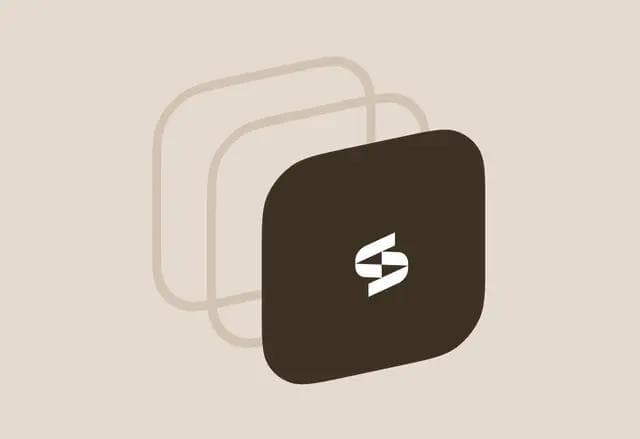Managing SaaS users is getting complicated—fast. IT teams today juggle multiple identity providers (IDPs), dozens of apps across different domains, and an ever-growing set of AI tools. Identity sprawl isn’t just a buzzword—it’s reality.
75% of organizations manage two or more IDPs, and 11% are juggling five or more. Every new login, tool, or domain adds complexity, security risk, and extra work for IT.
That’s where this guide comes in. We’ve put together 10 practical SaaS user account management best practices to help you cut down on risk, streamline workflows, and make the most of your software spend.
Think of it as a roadmap to take control of your SaaS ecosystem, simplify user access, and finally reduce the headaches that come with identity and app sprawl.
TL;DR
- SaaS user account lifecycle management has become increasingly difficult as IT teams juggle multiple identity providers, disconnected apps, and unsanctioned AI tools—creating identity sprawl, compliance risk, and wasted spend.
- The first step is to build a strong foundation with clear, role-based provisioning templates that align access with actual job functions and prevent permission creep.
- Next, extend visibility beyond your IDP to discover shadow IT and unmanaged accounts through SaaS management tools that cover non-SSO and non-SCIM apps.
- Then, automate offboarding, license cleanups, and continuous audits to maintain compliance, reduce manual work, and eliminate orphaned accounts across your stack.
- Modern SaaS user management tools like Stitchflow bring this all together by unifying HR, IDP, and SaaS data. This automates provisioning, deprovisioning, compliance evidence, and renewal optimization end-to-end.
1. Set up role-aware provisioning from day one
Start by defining four to six core roles that map to actual job functions—not job titles. We also suggest creating a standardized request-and-approval workflow in your identity provider or ticketing system. This prevents the "grant everything and forget" pattern that creates security debt.
Once your roles are defined, create provisioning templates for each department in your IDP. Map standard role attributes (department, job function, location) to group memberships and app assignments.
When HR adds a new marketing manager, your template automatically provisions them to your marketing automation platform, design tools, and analytics suite with the correct permission tier.
As your RBAC model matures, watch out for role explosion. Teams often create hyper-specific roles for edge cases, turning a clean model into an unmaintainable mess. To keep your system manageable:
- Cap roles at 20 maximum: Beyond this, consolidate similar roles or use attribute-based access control for exceptions.
- Limit role nesting to two levels: Deeper hierarchies make troubleshooting permission issues nearly impossible.
- Document role inheritance explicitly: Create a visual map showing which groups grant what permissions so you can trace access in seconds during offboarding or audits.
- Schedule quarterly template reviews: Your stack evolves so perform user access reviews to ensure your provisioning logic keeps pace with new apps and changing team structures.
Can you implement RBAC with multiple identity providers?
Yes, but you need to unify visibility across them. The challenge with multiple IDPs is that each becomes its own silo—one team uses Okta, another uses Azure AD, and you lose the ability to enforce consistent role definitions or audit access holistically.
Modern SaaS management platforms—like Stitchflow—solve this by pulling identity and entitlement data from all your IDPs into a unified IT graph, giving you a single source of truth for who has access to what. This lets you define RBAC policies centrally and enforce them across your entire stack—regardless of which IDP provisions each app.
👉Use the free Stitchflow App Access Matrix to create role-based access policies for your organization.
2. Ensure account discovery beyond SSO and SCIM
Your IDP only shows you what's connected to it. The problem is that employees don't wait for IT approval—engineers spin up developer tools with personal emails, marketing tests AI platforms, and departments adopt collaboration apps that bypass SSO entirely. These shadow accounts create security gaps and compliance blind spots that never appear in your access reviews.
In fact, according to McKinsey, while C-suite leaders estimate that only 4% of employees use genAI for more than 30% of their daily work, employees self-report that the actual figure is three times higher. This visibility gap means corporate data is flowing through unmanaged AI tools at scale.
Then there are the apps that will never connect to your IDP—legacy systems, niche vertical SaaS, or tools that hide SCIM behind enterprise tiers. Here’s where SaaS management software with browser automation plays a key role. It enables you to read and write to virtually any app with a web UI, providing universal coverage without requiring you to rebuild workflows.
Once you've identified unmanaged and disconnected apps, audit for these common gaps:
- Orphaned personal accounts: Employees with both SSO access and legacy personal accounts that predate your standardization.
- Shared credentials: Multiple team members using a single login that bypasses individual access controls.
- Expired trial accounts: Free tiers that were never deprovisioned when employees left or projects ended.
You can also set up automated alerts when new high-risk categories appear—particularly AI tools, data analytics platforms, and anything touching customer data.
📚Also read: How to extend your passwordless strategy across all apps—even disconnected ones
3. Unify user data across HR, IDP, and disconnected SaaS apps
Your HR system, IDP, and individual SaaS apps all maintain their own user records—and they rarely match perfectly. An employee gets suspended in Workday but remains active in Salesforce. Or, a contractor uses their personal Gmail in Figma but their work email in Slack. These mismatches create security risks and make audits painful.
This means mapping the same person across different email domains, usernames, and account types. Your SaaS identity management platform should continuously sync data from HR (the authoritative source for employment status), your IDP (the authoritative source for authentication), and individual SaaS apps (the reality of who actually has access).
When discrepancies appear—like someone marked terminated in HR but still active in three apps—you need automated alerts and workflows to close the gap immediately. Common mismatches to monitor:
- Status divergence: Suspended/terminated in HR but active in SaaS apps
- Role drift: Job title changed in HR but access permissions never updated
- Orphaned accounts: Active SaaS users with no corresponding HR or IDP record
- Multi-identity users: Same person with multiple unlinked accounts across domains
💡Pro tip: Pay special attention to multi-domain scenarios. Acquisitions leave you with employees across @company.com, @acquired.com, and @oldname.com domains. Reconciliation logic should match users by multiple identifiers (employee ID, personal email, work email) rather than assuming one canonical email address.
4. Automate deprovisioning for 100% of apps
Offboarding is where most SaaS user management programs fail. According to Beyond Identity's 2022 survey, in more than 1 in 10 cases, a co-worker—not IT—handled the offboarding process. Just 9% of former employees remember an IT specialist being involved in their exit.
The result? Over a third still had access to company email and work files on personal devices after leaving.
The problem isn't intentional negligence—it's that manual deprovisioning doesn't scale. IT gets a termination notice, opens 15 browser tabs, and starts clicking through admin panels. Apps get missed. Shared accounts get forgotten. Personal email accounts that predate SSO stay active indefinitely.
Automate deprovisioning across your entire SaaS stack, not just SSO-connected tools. When HR marks someone as terminated, your SaaS user management platform should trigger immediate revocation workflows across every app—including disconnected SaaS tools that lack SCIM support.
💡Pro tip: Don't wait for termination to start deprovisioning. Implement time-based access reviews for inactive accounts—if someone hasn't logged into a SaaS app in 90 days, automatically downgrade their permissions or trigger a manager review. This catches role changes, team transfers, and project completions that HR systems never capture.
5. Integrate usage data to optimize renewals
Most IT teams manage software renewals in an ad-hoc way. Two weeks before a contract expires, you're frantically pulling CSVs, emailing managers asking "who still uses this?", and piecing together spreadsheets to figure out if you need 100 or 150 seats. By then, your negotiating leverage is gone, and you're stuck renewing based on guesswork rather than data.
You can optimize software license management by integrating usage data into your SaaS user management workflow. Set up a continuous tracking system that includes:
- Tracks usage and license utilization: Automatically prioritizes accounts based on risk, usage, and offboarding status.
- Identifies inactive accounts: Spots idle or orphaned accounts across all apps.
- Consolidates renewal data: Combines usage metrics and access history into a single dashboard for quick, confident renewal decisions.
This visibility lets you rightsize contracts months before renewal, giving you actual leverage in vendor negotiations. Some platforms even provide automated Slack surveys that ping inactive users directly, asking whether they still need access to a specific app or if it can be deprovisioned. This turns what used to be a manual email chase into a self-service workflow.
Case in point: SpotOn X Stitchflow
SpotOn, a global payments company with 2,000+ employees, was spending two weeks per app on manual renewal audits, matching spreadsheets, and chasing manager confirmations. After implementing centralized usage tracking with Stitchflow, they reviewed 7,000 accounts across multiple applications in 15 minutes with full context for quick decisions.
The result: $160K+ in savings from released unused licenses and elimination of unnecessary SCIM/SSO enterprise upgrades—all while reducing manual work equivalent to two full-time employees.
👉Read more about how Stitchflow helped SpotOn save $160K+ with context-aware software renewals.
6. Leverage AI risk scoring to govern SaaS tools
The rapid adoption of AI applications has turned SaaS governance into a moving target. Every week, employees bring in new AI-based tools—many with opaque data policies, non-existent APIs, and no SSO or SCIM support.
Effective governance now depends on quantitative AI risk scoring. Stitchflow, for example, integrates directly with your identity, HR, and usage data to automatically evaluate each discovered AI tool against a comprehensive 60-point risk framework. This includes:
- Data handling: where data is stored, whether it’s encrypted, and how long it’s retained.
- Authentication controls: SSO/SCIM support, MFA enforcement, and OAuth scope analysis.
- AI model transparency: whether models are proprietary, open-source, or third-party hosted.
- Regulatory posture: compliance with SOC 2, ISO 27001, GDPR, and regional data laws.
- Usage exposure: who’s using it, how often, and what kind of data they’re uploading.
These factors are normalized into an AI risk score that’s contextualized by actual user activity—so IT can differentiate between a low-risk experiment and a high-risk operational dependency.
7. Include external users in your lifecycle management strategy
External users—contractors, vendors, and partners—are often the biggest blind spot in SaaS security and compliance. They join quickly, leave quietly, and rarely follow the same onboarding and offboarding workflows as full-time employees. Yet they frequently have access to the same systems, source code, and data.
The root cause is structural. Contractors often sit outside your Identity Provider (IDP), so when HR marks them as “inactive,” their accounts in Salesforce, Figma, or GitHub remain active.
The solution is to treat external identities as first-class citizens in your SaaS user management. Use a platform that automatically reconciles every user—employee or external—across connected and disconnected apps.
By stitching together data from HR systems, IDPs, app directories, and even CSV exports, you can find:
- Accounts tied to personal or non-corporate domains (e.g., Gmail or contractor domains)
- External accounts that persist after contract end dates or HR termination
- Duplicate or hidden user records across different domains or systems of record
This way, you also ensure these contractor identities are captured in quarterly access reviews and compliance reporting.
8. Establish least-privilege access by default
Excess user access is another of IT’s most common—and costly—security gaps. Over time, users accumulate permissions they no longer need: a marketing contractor with admin rights in HubSpot, an engineer still in a “Production” group after a role change, or a former intern lingering in Slack channels. Each unnecessary privilege expands your attack surface, increases compliance risk, and makes access reviews a manual slog.
IDPs like Okta and EntraID can enforce policies for federated apps, but they can't account for the 30–40% of SaaS tools without SSO or SCIM integrations. That leaves IT managing permissions reactively—through ad hoc audits or post-incident cleanups.
Build least privilege into the foundation of your SaaS user account lifecycle management strategy by continuously mapping every user's real access across connected and disconnected apps. Your identity governance platform should surface:
- Role-permission alignment: Whether each user's access matches their current role and employment status
- Privilege drift: Users holding admin roles or elevated permissions they no longer require
- Inactive or orphaned accounts: Seats that should be deprovisioned but remain active
With these insights, you can right-size permissions automatically. Platforms like Stitchflow enable bulk access corrections, automated offboarding, and department-based provisioning templates that ensure new user accounts start with minimal necessary access.
💡Pro tip: For high-risk apps or exception-heavy scenarios, trigger review workflows or ITSM tickets that require manager approval before any privilege elevation occurs.
9. Implement continuous auditing to ensure year-round compliance
Compliance isn't supposed to be a panic-driven spreadsheet marathon—but for most IT teams, it still is. Weeks before every SOC 2, ISO/IEC 27001, or SOX review, teams scramble to prove who has access to what, which accounts were offboarded, and whether evidence matches policy.
The underlying issue isn't effort—it's visibility. Without continuous auditing, IT can't demonstrate control over disconnected apps, orphaned accounts, or contractor access until the next audit cycle, when it's already too late.
The modern approach is continuous compliance—embedding real-time visibility and evidence capture directly into your user account management workflow. Instead of performing quarterly access reviews manually, build a system that tracks, logs, and verifies changes automatically:
- Automate evidence generation at the source: Every access change, offboarding action, or license removal should create audit evidence in real time. Connect your IDP, HRIS, and key SaaS tools to log changes with timestamps and user context.
- Centralize audit data in one repository: Feed logs into a single system of record (SIEM, ITSM, or identity governance platform). Platforms like Stitchflow unify data from IDPs, HRIS, app APIs, and CSV-based systems into an IT Graph, so compliance evidence is always ready.
- Integrate with existing ITSM tools: Use Jira, ServiceNow, or Freshservice as your workflow backbone. Each access review or offboarding task generates a trackable ticket that becomes proof of control when closed.
- Set automated triggers for compliance controls: Configure alerts for noncompliance conditions like accounts active 30 days post-termination, apps missing owners, or users with excessive privileges.
- Extend auditing to disconnected apps: Most compliance gaps come from tools outside your IDP. Identity governance platforms continuously scan non-SSO/SCIM tools for orphaned accounts and auto-generate audit-ready evidence with timestamped reports.
The result: Audits become part of daily IT hygiene. Every change is documented, every exception has an owner, and your compliance evidence is always one export away.
📚Also read: How to conduct an IT compliance audit
10. Use modern SaaS management software
Traditional software asset management tools were built for on-premise software and hardware tracking—not the complexity of modern SaaS environments. They excel at tracking license counts and renewal dates but fall short on the identity and access challenges that define SaaS management.
Modern SaaS management platforms are purpose-built for this reality. They treat identity as the foundation, not an afterthought. Instead of just cataloging software, they unify user data across HR systems, IDPs, and individual SaaS apps—including the 30-40% of tools that lack API or SCIM support.
Some features to look out for in your SaaS user management platform are:
- Universal app coverage: Should handle both API-connected and disconnected apps (legacy systems, SCIM-paywalled tools, niche SaaS)
- Unified IT graph: Reconciles users across multiple domains, IDPs, and systems of record to create a single source of truth
- Automated lifecycle management: Provisions, updates, and deprovisions users across all apps, not just SSO-enabled ones
- Continuous compliance evidence: Auto-generates audit-ready reports with timestamped access changes and offboarding verification
The right platform eliminates the gap between what your IDP can control and what your business actually uses. It shifts SaaS management from reactive firefighting to proactive governance.
Automate SaaS user lifecycle management with Stitchflow
User management in SaaS applications doesn’t fail because IT teams lack effort—it fails because they lack unified visibility and automation. From provisioning to deprovisioning, from AI risk to compliance evidence, every manual process creates opportunities for errors, overspending, and security gaps.
That’s exactly what Stitchflow was built to do. Stitchflow connects your HR, IDPs, and every app—connected or disconnected—into a single IT Graph that continuously tracks users, risks, and access across your entire SaaS stack.
It automates deprovisioning, audits, and license reclamation for 100% of apps (not just those with SCIM or API access) while providing real-time visibility into who has access to what.
This means fewer orphaned accounts, faster offboarding, stronger compliance evidence, and measurable SaaS cost savings—without adding more tools or manual reviews.
👉Book a demo to see how Stitchflow helps IT teams eliminate manual work, secure every account, and finally get full control over their SaaS environment.
Frequently asked questions
The biggest challenges are incomplete offboarding (accounts remaining active after termination), shadow IT discovery (apps adopted outside IT approval), and managing disconnected apps that lack API or SCIM support.
Pravinan Sankar is fascinated by the chaos that happens when orgs try to manage hundreds of SaaS tools without losing their sanity. He creates content for IT teams who want fewer surprises in their workday. His approach blends data with storytelling because spreadsheets alone don't inspire action.



